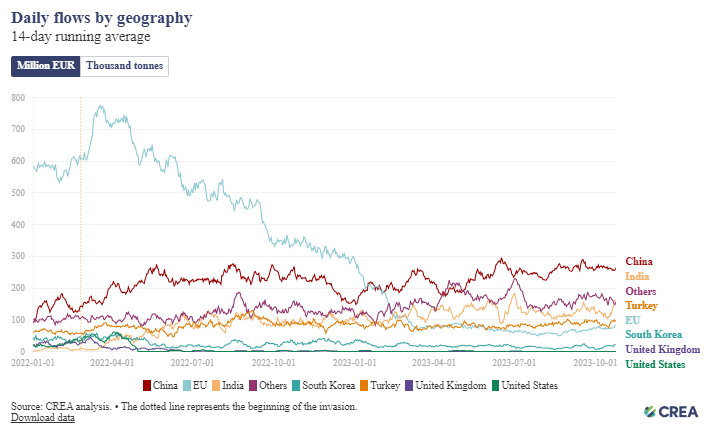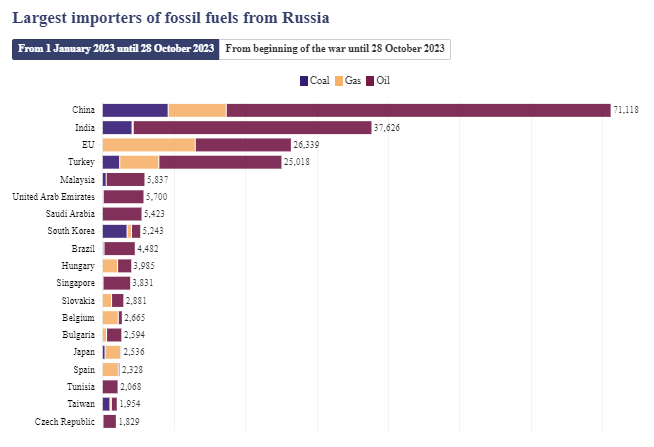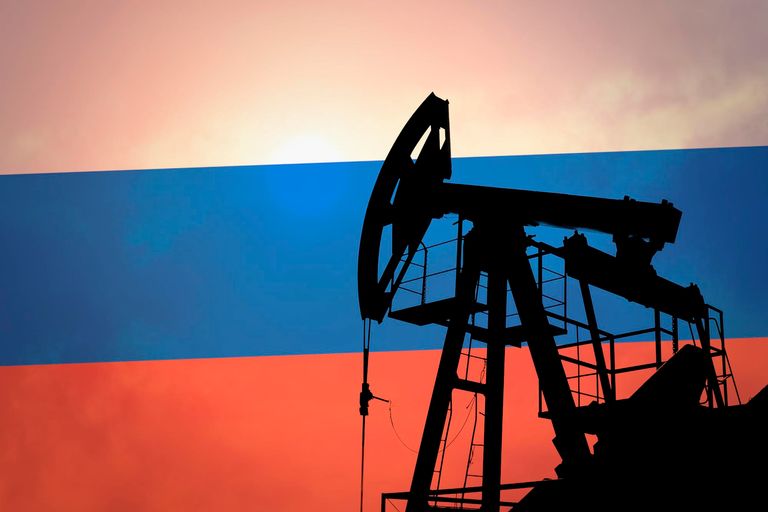Original article (in BCS) was published on 13/12/2023; Author: Amar Karađuz
In a widely shared Instagram post discussing Russian income from fossil fuel sales, there was a misleading statement claiming that the European Union (EU)“remains the largest importer of Russian energy products”.
On November 17, 2023, the Instagram account pepo.politika posted a message asserting that since the onset of its invasion of Ukraine, the Russian Federation has garnered 550 billion euros through the sale of fossil fuels:
Russia earned 550 billion euros from oil and gas sales.
This information comes from the Center for Energy and Clean Air Research.
The EU remains the largest importer of Russian energy products. The main buyers are Germany (28 billion euros), the Netherlands (18 billion euros) and Italy (17 billion euros).
After the EU on the list of the largest buyers is China, which spent more than 143 billion euros. In addition, the Russian Federation exports energy products to India, Turkey and South Korea.

This Instagram post has received over 5,200 “likes.” The same content was also posted on a Facebook profile with the same name, and similar messages were found on other Facebook profiles (1, 2) and on the X social network (1, 2).
What are the facts?
The Russia Fossil Tracker website, developed by the Center for Energy and Clean Air Research (CREA), monitors the income that the Russian Federation made from fossil fuel exports (coal, oil and gas) after the start of the invasion of Ukraine on February 24, 2022. The monitoring methodology is available at this link.
On the archived version of this page from November 16, 2023, one the day before the “news” was published on the pepo.politika Instagram profile, there was an estimate showing that the Russian Federation had earned 536 billion euros from exporting fossil fuels.
According to our estimates, Russia has earned 536 billion euros in revenue from the export of fossil fuels since the beginning of the war. The countries of the European Union bought [fuels] for more than 179 billion euros.
The page clarifies that the figure represents revenue from the sale of fossil fuels. Revenue is the total income generated from selling a product or service. To determine actual earnings or profits, one must deduct the costs (or expenses) related to production from this revenue. Consequently, the actual profit from the sale of Russian fossil fuels would be lower than the reported amount.
Based on the chart available on the site, it’s evident that the EU has been the largest purchaser of Russian fossil fuels throughout the period since the start of Ukraine’s invasion.

In an Instagram post by pepo.politika, the claim was made that “the EU remains the largest importer of Russian energy products.” However, this statement is misleading without context regarding how much the EU’s purchase of Russian fossil fuels has declined since the start of the Ukraine invasion.
Specifically, while imports of fossil fuels from the Russian Federation to China, India, and Turkey have remained relatively stable during the conflict, EU countries have significantly cut back on their purchases of coal, oil, and gas from Russia.
These data indicate that the trend of reducing Russian fossil fuel purchases in the European Union has been ongoing since March 2022. By October of the same year, the EU’s daily purchase level had dropped to a rate comparable to Turkey’s (up to 100 million euros per day).

Indeed, it is accurate to state that the EU was the largest spender on Russian gas, oil, and coal when considering the period from February 2022 to October 2023. However, it’s misleading to label the EU as the current largest importer of Russian energy products, given that it has significantly reduced its fossil fuel imports from Russia over the last year.
Specifically, since the start of 2023, China and India have been the top spenders on Russian fossil fuel imports. According to data from the Center for Energy and Clean Air Research (CREA), the European Union now ranks third in this regard.

The data confirms that since the onset of the invasion, the European Union has been the biggest spender on Russian oil, gas, and coal. However, currently, the EU is no longer the largest importer of Russian energy products.
Pepo politika is a social media account active onFacebook, Instagram, YouTube, TikTok, X and Telegram. It publishes content from the domain of global and regional politics, with an evident pro-Russian tone. Read more about Pepo politika in the analysis available on this link.
Considering all the facts, we conclude that the assertion of the Russian Federation earning 550 billion euros from oil and gas sales since the start of the war in Ukraine is a manipulation of facts, as the figure pertains to revenue, not profit. Similarly, the claim that the EU remains the largest importer of Russian energy products is misleading, as recent data from this year indicates otherwise.

